Tech
How to Sell Gift Cards: A Complete Guide for Online and In-Person Sales

Introduction
Selling gift cards is one of the smartest ways to boost revenue, attract new customers, and build long-term loyalty. Whether you run a local salon, restaurant, retail shop, or eCommerce store, gift cards can generate instant cash flow while promoting your brand.
In this guide, you’ll learn exactly how to sell gift cards — both online and in real life — step by step. We’ll cover setup, tools, pricing, legal rules, and practical marketing tips to help you start selling confidently.
1. Understand the Two Main Types of Gift Cards
Gift cards come in two main forms — digital and physical.
- Digital gift cards: Sent instantly through email or text. Ideal for online stores and last-minute shoppers.
- Physical gift cards: Printed and handed out in-store. These work well in local businesses, cafes, spas, and retail spaces.
- Hybrid approach: The best of both worlds — offer digital cards online and physical cards for walk-in customers.
2. Choose the Right Platform to Sell Gift Cards
Online Options
- WooCommerce on WordPress
- Use plugins like PW WooCommerce Gift Cards or YITH WooCommerce Gift Cards.
- Customize denominations and add email delivery.
- Works perfectly for businesses running WordPress sites.
- Shopify
- Offers built-in support for digital and physical gift cards.
- Easy checkout process with email templates.
- Square or Toast POS
- Great for restaurants, salons, and small retail shops.
- Sell and redeem gift cards both online and offline.
In-Person Options
If you sell mainly at a physical location:
- Use POS gift card systems like Square, Clover, or Lightspeed.
- Display gift cards near the checkout counter or in visible racks.
- Train staff to explain gift card options clearly to customers.
3. How to Set Up Gift Cards on WordPress (WooCommerce)
- Install and activate WooCommerce.
- Add a plugin like PW WooCommerce Gift Cards.
- Create a “Gift Card” product.
- Set price options — fixed amounts like $25, $50, or custom values.
- Customize the email design or downloadable PDF.
- Test the purchase and redemption process.
- Create a dedicated “Gift Cards” page in your site’s main menu.
This setup ensures a seamless user experience and builds trust with your buyers.
4. Pricing, Terms, and Legal Considerations
- Offer flexible denominations — e.g., $10, $25, $50, $100.
- Avoid hidden fees or short expiration periods (some regions legally prohibit expiration).
- Clearly display redemption terms and refund policies.
- Most states require unredeemed balances to be treated as deferred revenue — consult your accountant for local tax rules.
5. Marketing Strategies to Sell More Gift Cards
Make Them Visible
- Add a “Gift Cards” link in your main website navigation.
- Feature them on your homepage and checkout page.
- Create banners or pop-ups promoting gift cards during holidays or special events.
Seasonal Promotions
- Offer limited-time deals like “Buy a $50 Gift Card, Get $10 Free.”
- Create campaigns for Mother’s Day, Christmas, Valentine’s Day, and birthdays.
Email and Social Media
- Send newsletters highlighting gift card options.
- Post about them on Instagram, Facebook, and Google Business Profile.
- Use gift card giveaways to engage your audience.
Local Collaborations
Partner with nearby businesses. For example, a spa can team up with a café to offer a joint gift card package.
6. Offline Selling: In-Store and Event Sales
- Display physical gift cards near the register or service desk.
- Offer beautifully designed cards with envelopes for gifting appeal.
- Sell them at local markets, pop-ups, or holiday fairs.
- Use QR codes that link directly to your online purchase page.
Train your staff to explain how customers can use and reload their cards.
7. Prevent Fraud and Keep Transactions Secure
- Generate unique gift card codes for each order.
- Use HTTPS encryption and trusted payment gateways like Stripe or PayPal.
- Limit redemption attempts to prevent brute-force fraud.
- Monitor for suspicious bulk purchases.
- Always verify high-value transactions before delivery.
8. Track Your Results
Measure your gift card program performance with:
- Total gift card sales per month.
- Redemption rates.
- Average order value after redemption.
- New vs. returning customer ratios.
You can view these metrics directly inside WooCommerce Analytics or your POS dashboard.
9. SEO Tips for Your Gift Card Page
To align with Google’s latest 2024–2025 algorithm updates focused on helpful content and user intent:
- Write detailed, original content that explains how to buy and redeem gift cards.
- Add an FAQ section (use FAQ schema for rich snippets).
- Include Product schema for your gift card page.
- Optimize for mobile devices and fast loading speed.
- Use natural keywords like:
“Buy gift cards online,” “gift cards for local businesses,” “sell digital gift cards,” “gift cards near me.” - Maintain clear authorship information and trust signals (contact info, about page, return policy).
10. Launch Checklist
✅ Add “Gift Cards” page to your website menu.
✅ Set up WooCommerce or your chosen gift card plugin.
✅ Customize delivery emails and printable designs.
✅ Add structured data and internal links.
✅ Promote through social media and email.
✅ Monitor analytics monthly.
Conclusion
Selling gift cards isn’t just about convenience — it’s a powerful business strategy that increases cash flow, attracts new customers, and strengthens brand loyalty.
With the right setup and promotion, your online store or physical shop can turn gift cards into a consistent revenue stream.
Start today: create your “Gift Cards” page, promote it across your channels, and make giving easier for your customers — whether they shop online or in person.
Tech
EV Technology: The Future of Electric Vehicles and Sustainable Mobility

Introduction
Electric Vehicle Technology (EV Tech) is reshaping the future of transportation. With rising concerns over climate change, fuel dependency, and urban pollution, electric vehicles have emerged as a sustainable alternative to traditional combustion-engine cars. In 2025, EV technology is advancing at record speed, powered by innovations in batteries, charging infrastructure, artificial intelligence, and smart mobility solutions.
This blog explores the fundamentals of EV technology, its benefits, challenges, and the trends that are driving the global transition to electric mobility.
What is EV Technology?
EV technology refers to the systems and innovations that power electric vehicles, replacing conventional fuel-driven engines with electric motors and batteries. Unlike internal combustion engine (ICE) vehicles, EVs use stored electrical energy for propulsion, making them cleaner, quieter, and often more cost-efficient.
Key Components of EV Tech include:
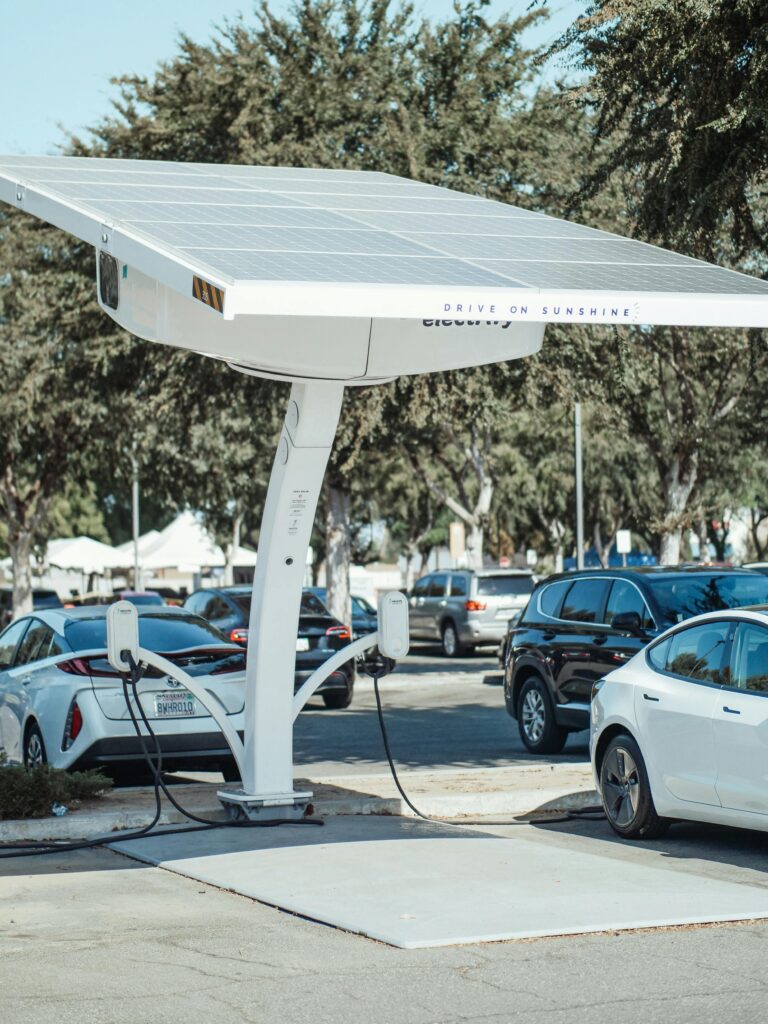
- Battery Systems – Store and supply power.
- Electric Motors – Convert electrical energy into mechanical energy.
- Charging Infrastructure – Networks that recharge EV batteries.
- Software & AI – Optimize energy efficiency and integrate smart driving features.
Evolution of EV Technology
- Early 19th Century – First prototypes of electric vehicles appeared, but limited by battery technology.
- Late 20th Century – Introduction of hybrid vehicles (e.g., Toyota Prius).
- 2000s – Lithium-ion batteries revolutionized EV performance.
- 2010s – Tesla, Nissan, and Chevrolet popularized modern EVs.
- 2020s – Emergence of solid-state batteries, wireless charging, and AI-driven EVs.
Core Components of EV Technology
1. Battery Systems
The battery is the heart of an EV.

- Lithium-ion Batteries – Current standard, offering balance of cost, weight, and performance.
- Solid-State Batteries – Next-generation tech with faster charging, higher capacity, and safety benefits.
- Battery Recycling – Essential for sustainability, reducing reliance on rare earth metals.
2. Electric Motors
EVs rely on motors instead of engines.
- Induction Motors – Used by Tesla for durability.
- Permanent Magnet Motors – Efficient but depend on rare earth materials.
- Switch Reluctance Motors – Gaining popularity due to efficiency and cost-effectiveness.
3. Charging Infrastructure
- Level 1 (Slow Charging): Household outlets, ~8–12 hours for full charge.
- Level 2 (Fast Charging): Common in homes/offices, 3–6 hours.
- DC Fast Charging: Rapid, ~30 minutes to 1 hour.
- Wireless Charging: Emerging tech for convenience.
4. Software & AI Integration
EVs are as much about software as hardware.

- AI optimizes battery usage.
- Smart navigation suggests charging stations.
- Over-the-air (OTA) updates improve features.
- Integration with autonomous driving systems.
Benefits of EV Technology
- Environmental Sustainability – Zero tailpipe emissions reduce air pollution.
- Lower Operating Costs – Electricity is cheaper than fuel; fewer moving parts mean less maintenance.
- Energy Efficiency – EVs convert ~60% of energy into motion (vs ~20% for ICE vehicles).
- Government Incentives – Tax breaks, subsidies, and priority access to urban areas.
- Noise Reduction – EVs operate quietly, improving urban living conditions.
Challenges Facing EV Technology
- High Initial Cost – Batteries still make EVs more expensive upfront.
- Charging Infrastructure Gaps – Limited access in rural areas.
- Range Anxiety – Fear of running out of charge.
- Battery Life & Recycling Issues – Sustainability concerns remain.
- Grid Demand – Increased EV adoption puts pressure on energy grids.
Future Trends in EV Technology
- Solid-State Batteries – Promising faster charging and greater energy density.
- Vehicle-to-Grid (V2G) – EVs feeding power back into grids during peak hours.
- Autonomous EVs – Combining self-driving tech with electric propulsion.
- Hydrogen Fuel Cell EVs – Offering long-range clean energy.
- Global Expansion of Charging Networks – Faster and more accessible infrastructure.
Global Adoption of EV Tech
- China – World leader with largest EV market and government support.
- Europe – Strong regulations pushing for 100% EV adoption by 2035.
- United States – Rapid expansion led by Tesla, Rivian, and GM.
- Developing Countries – Gradual adoption due to infrastructure and affordability issues.
EV Tech for Consumers
How to Choose an EV:
- Check battery range.
- Review charging options nearby.
- Compare total cost of ownership (TCO).
- Look for government incentives.
Lifestyle Impact:
- Lower maintenance.
- Eco-conscious driving.
- Need to plan charging stops during long trips.
FAQs
1. How long does it take to charge an EV?
Depends on the charger: Level 1 takes 8–12 hours, while DC fast charging can recharge in under an hour.
2. What is the lifespan of an EV battery?
Typically 8–15 years, depending on usage and technology.
3. Are EVs cheaper to maintain than gas cars?
Yes. Fewer moving parts mean reduced repair costs.
4. Can EVs really reduce carbon emissions?
Yes, especially when powered by renewable energy sources.
5. What’s next for EV technology?
Solid-state batteries, AI-powered driving, and global charging networks.
Conclusion
EV technology is not just a trend it’s the future of transportation. With advancements in batteries, charging infrastructure, and AI integration, EVs are becoming more affordable, efficient, and accessible. Governments and industries worldwide are investing heavily in EV innovation, accelerating the shift toward a greener, smarter, and more sustainable future.
Tech
T-Mobile 5G Internet: The Future of Connectivity at Your Fingertips
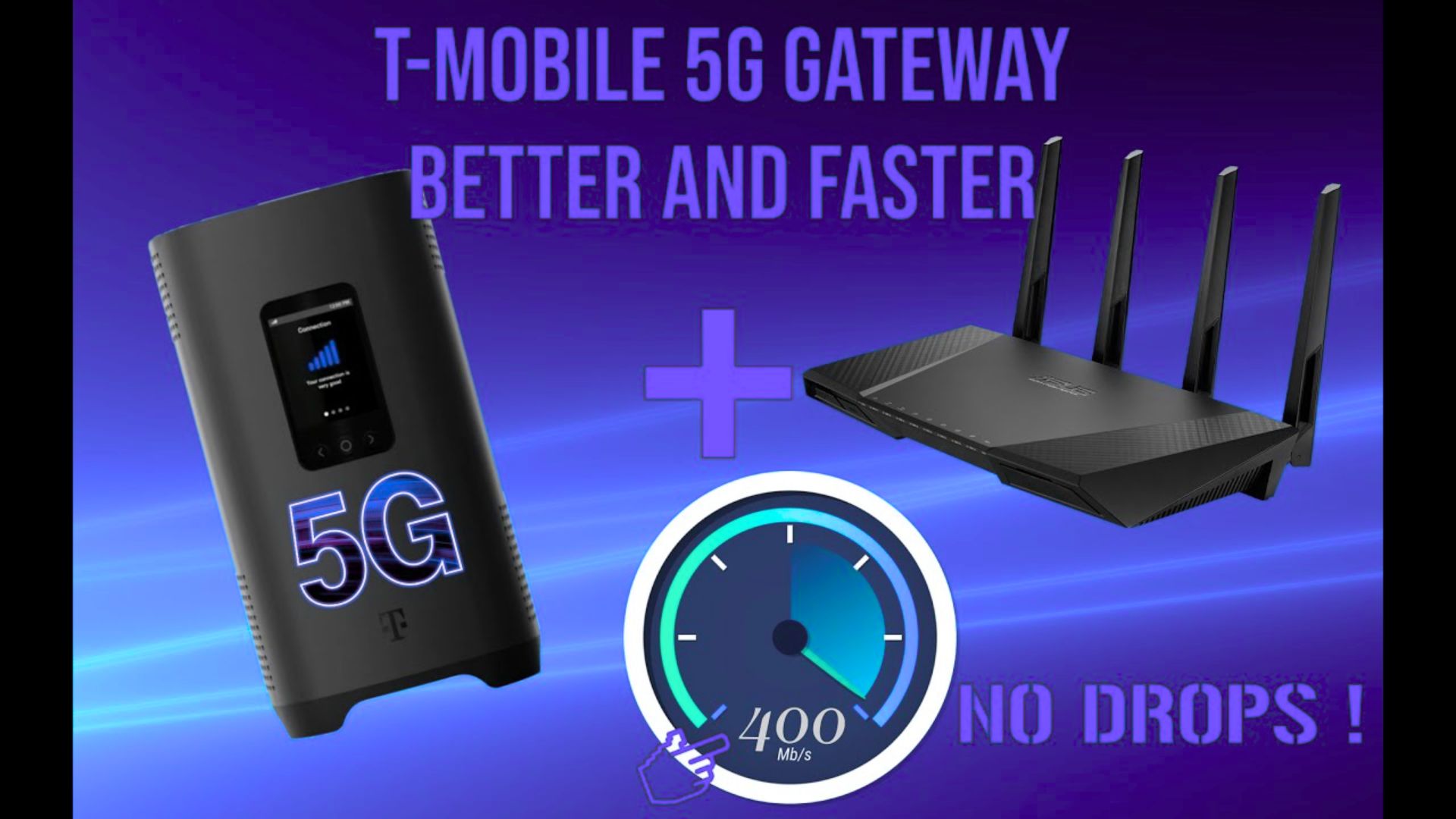
Introduction
The digital age is defined by speed, connectivity, and innovation. Whether it’s streaming movies, attending virtual meetings, gaming, or managing a smart home, reliable internet has become a necessity. For years, households have relied on traditional broadband or cable connections, but with the rise of 5G technology, everything is changing. One of the pioneers in bringing this revolutionary shift to homes and businesses is T-Mobile 5G Internet.
T-Mobile has quickly become a household name not only for mobile phone services but also for its home internet solutions. With the rollout of 5G, T-Mobile is offering fast, affordable, and widely available internet, challenging the dominance of cable and fiber providers. This blog takes an in-depth look at T-Mobile’s 5G internet service, its benefits, features, availability, performance, and whether it’s the right choice for you.
What is T-Mobile 5G Internet?
T-Mobile 5G Internet, also referred to as T-Mobile Home Internet, uses the same 5G cellular technology that powers smartphones but brings it to your home. Instead of relying on underground cables or fiber optics, T-Mobile uses its nationwide wireless network to deliver high-speed internet to households and small businesses.
The service comes with a 5G Wi-Fi gateway device that acts as both a modem and router. You simply plug it in, and it connects to the nearest T-Mobile cell tower, distributing internet throughout your home.
This makes setup quick and easy no technician visits, drilling, or complicated wiring.
Key Features of T-Mobile 5G Internet
1. Nationwide Availability
One of the biggest selling points of T-Mobile’s 5G internet is its broad coverage. T-Mobile claims its 5G home internet is available to more than 50 million households across the United States, making it the most widely accessible 5G home internet option.
2. Easy Setup
Forget about waiting for installation appointments. T-Mobile’s plug-and-play device makes it easy to set up internet in minutes. Users simply connect the gateway, follow the mobile app instructions, and enjoy high-speed internet.
3. Unlimited Data
Unlike many internet providers that impose data caps or throttle speeds after a limit, T-Mobile Home Internet offers truly unlimited data. This is particularly appealing for heavy streamers, remote workers, and gamers.
4. Affordable Pricing
At around $50–$60 per month (with autopay), T-Mobile’s pricing is competitive compared to cable and fiber providers. There are no hidden fees, annual contracts, or equipment rental charges.
5. Reliable Speeds
Depending on location, users typically experience speeds ranging from 72 Mbps to 245 Mbps, with uploads between 15–30 Mbps. While this may not always beat fiber speeds, it’s sufficient for streaming, video calls, and online gaming.
6. Portability
Unlike traditional wired connections, the T-Mobile gateway can be moved. This makes it especially useful for people who relocate often or live in rural or underserved areas.
The Technology Behind T-Mobile 5G Internet
T-Mobile’s internet service leverages a combination of 5G Ultra Capacity and 4G LTE networks to ensure stable coverage. Here’s how it works:
- 5G Ultra Capacity (mid-band and high-band spectrum): Provides fast speeds, often exceeding 200 Mbps, ideal for cities and suburbs.
- 5G Extended Range (low-band spectrum): Covers larger geographic areas, ensuring rural customers get consistent service, though speeds may be slightly lower.
- 4G LTE backup: When 5G is not available, the gateway falls back on 4G LTE, so you’re never completely offline.
This hybrid model allows T-Mobile to serve both densely populated urban centers and remote rural communities.

Pros of T-Mobile 5G Internet
- No Contracts or Hidden Fees – Cancel anytime without penalties.
- Wide Coverage – More availability than most fiber networks.
- Affordable Flat Pricing – No sudden price hikes after a promotional period.
- Unlimited Data – Great for heavy internet users.
- Portable Gateway Device – Move it around your house or even take it to another location.
- Quick Setup – Self-installation without technicians.
Cons of T-Mobile 5G Internet
- Speeds Can Vary by Location – Performance depends on proximity to towers and network congestion.
- Not as Fast as Fiber – While sufficient for most households, fiber still offers faster and more consistent gigabit speeds.
- Network Congestion During Peak Hours – In heavily populated areas, speeds may drop when many users are online.
- Limited Availability in Some Rural Areas – While coverage is expanding, not all regions are eligible yet.
T-Mobile 5G Internet vs. Traditional Cable & Fiber
| Feature | T-Mobile 5G Internet | Cable Internet | Fiber Internet |
|---|---|---|---|
| Setup | Plug-and-play, no install | Requires technician | Requires technician |
| Contracts | None | 1–2 year contracts | 1–2 year contracts |
| Data Caps | Unlimited | Often capped | Unlimited |
| Speeds | 72–245 Mbps (avg) | 100–1,000 Mbps | Up to 1–5 Gbps |
| Availability | Wide (urban & rural) | Widely available | Limited to cities/suburbs |
| Cost | ~$50–$60 per month | $50–$100 per month | $70–$150 per month |
This comparison shows that while T-Mobile may not beat fiber in speed, it competes strongly in price, accessibility, and simplicity.
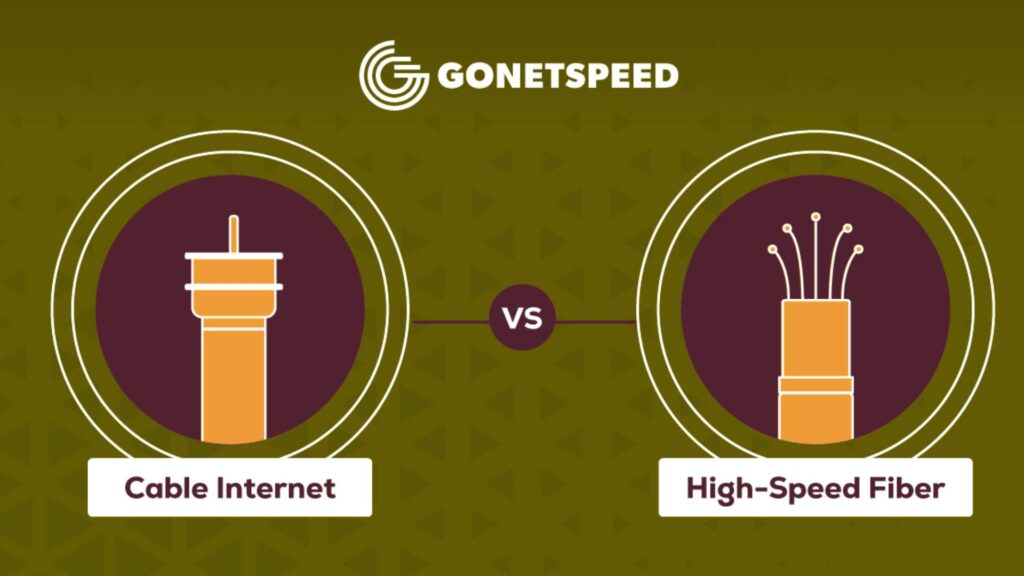
Who Should Consider T-Mobile 5G Internet?
- Rural Residents – If fiber and cable are not available, T-Mobile’s wide coverage makes it a solid choice.
- Renters & Movers – The portable gateway is perfect for people who move frequently.
- Budget-Conscious Families – At a flat monthly fee with no hidden costs, it’s an affordable alternative.
- Remote Workers & Students – Reliable for video calls, online classes, and productivity tools.
- Small Households – Best for homes with light-to-moderate usage (streaming, browsing, video calls).
Real-World Performance
Many users report consistent speeds in the 100–200 Mbps range, which is more than enough for streaming 4K videos, gaming, and running smart devices. Latency is generally between 30–50 ms, which is acceptable for most online activities but may not satisfy professional gamers who need ultra-low latency.
Streaming platforms like Netflix, Hulu, Disney+, and YouTube run smoothly, and Zoom or Teams meetings rarely experience drops. However, heavy households with multiple 4K streams running simultaneously may notice occasional slowdowns.
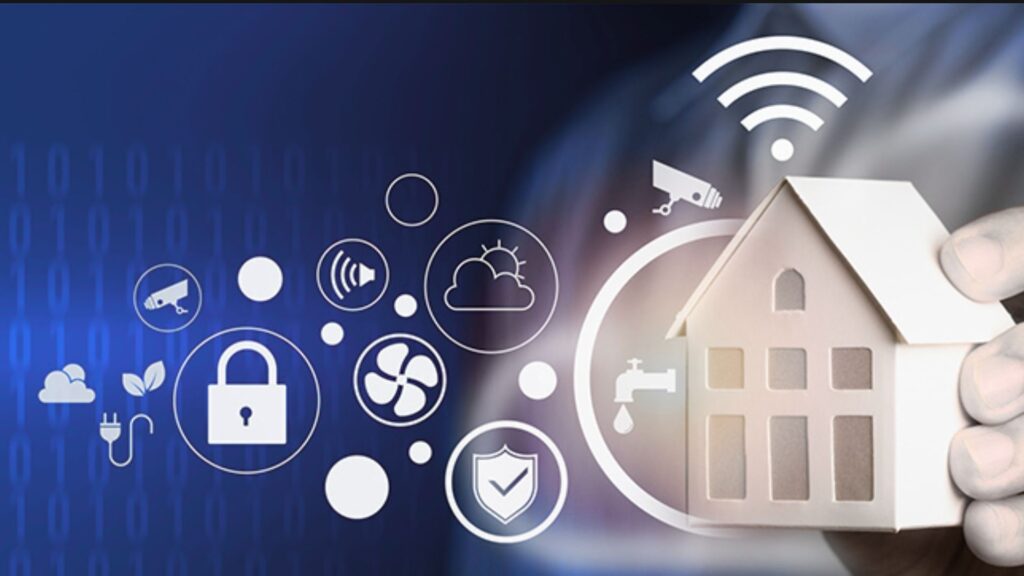
Security & Equipment
The T-Mobile gateway comes with:
- Built-in Wi-Fi 6 for faster speeds and better coverage.
- Password-protected network with customizable settings.
- T-Mobile Home Internet App for managing devices, checking signal strength, and running speed tests.
The app also allows users to set parental controls, guest networks, and troubleshoot issues without needing technical knowledge.
T-Mobile 5G Internet for Businesses
While primarily designed for residential use, T-Mobile also offers solutions for small businesses. For startups, remote offices, and mobile businesses (like food trucks or pop-up shops), the wireless gateway provides flexible internet access without the hassle of wiring or contracts.
Businesses that need ultra-fast, symmetrical speeds for cloud applications may still prefer fiber, but for cost-conscious operations, T-Mobile is a practical alternative.
T-Mobile’s Competitive Advantage
T-Mobile stands out from competitors like Verizon and AT&T due to:
- Larger 5G Coverage Map – T-Mobile covers more areas than Verizon and AT&T combined.
- Simplified Pricing – No extra fees, equipment charges, or promotional gimmicks.
- Aggressive Expansion – T-Mobile continues to invest in expanding its 5G network, promising even faster speeds in the future.
The Future of 5G Home Internet
Experts predict that 5G will revolutionize internet access in the coming decade. With speeds eventually reaching gigabit levels and low latency rivaling fiber, 5G internet could become the primary way households connect.
T-Mobile is leading this charge, and as its infrastructure improves, customers can expect:
- Higher speeds (up to 1 Gbps).
- Lower latency for gaming and virtual reality.
- Better rural coverage.
- Smart home integration.
Conclusion
T-Mobile 5G Internet is a game-changer for households looking for affordable, reliable, and easy-to-use internet. While it may not completely replace fiber for speed enthusiasts, it offers a strong alternative to cable providers and opens doors for millions of rural and underserved communities.
With its unlimited data, simple setup, and transparent pricing, T-Mobile has set a new standard for home internet in the 5G era. For many households, it’s not just an option—it’s the future.
FAQs About T-Mobile 5G Internet
Q1: How fast is T-Mobile 5G Home Internet?
Speeds typically range from 72 Mbps to 245 Mbps, depending on location.
Q2: Is T-Mobile Home Internet really unlimited?
Yes, there are no data caps or hidden throttling policies.
Q3: Does it work in rural areas?
Yes, T-Mobile has one of the widest 5G coverage maps, making it available in many rural regions.
Q4: Can I use T-Mobile Home Internet for gaming?
Yes, casual and mid-level gaming works fine, though pro gamers may prefer fiber for lower latency.
Q5: What equipment is required?
Just the T-Mobile 5G Wi-Fi gateway, which is included at no extra cost.
Entertainment
Xbox Cloud Gaming: The Future of Gaming Without Consoles
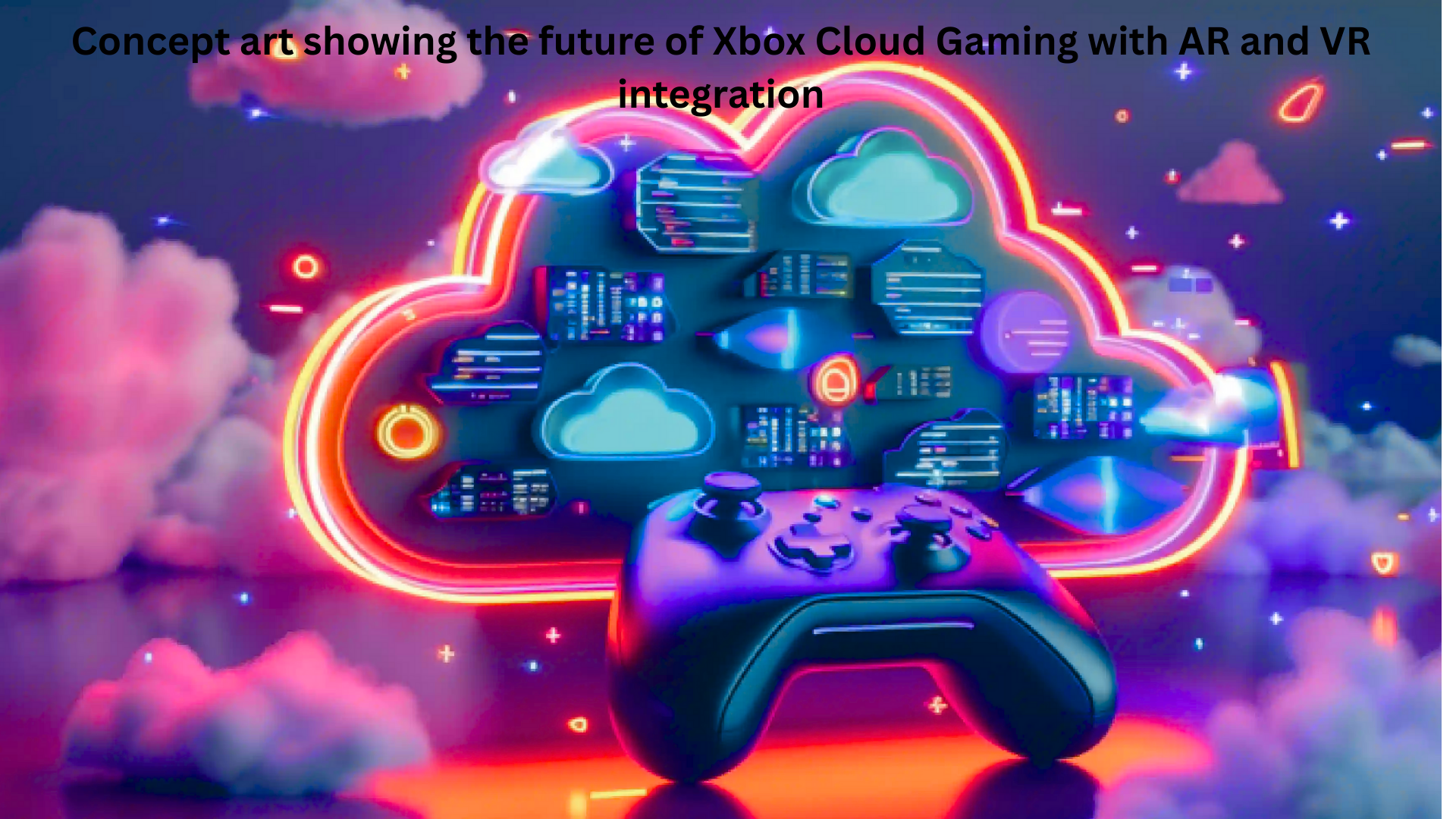
Introduction
Imagine being able to play AAA console-quality games without buying an expensive console or PC. Imagine streaming your favorite titles like Halo Infinite, Forza Horizon 5, or Starfield on your phone, tablet, or even a smart TV with nothing more than an internet connection.
This isn’t just a dream anymore it’s reality, thanks to Xbox Cloud Gaming (formerly known as Project xCloud). As part of Microsoft’s Xbox Game Pass Ultimate, this service allows players to stream games directly from Microsoft’s powerful servers to almost any device, eliminating the need for costly hardware and lengthy downloads.
In this blog, we’ll take a deep dive into what Xbox Cloud Gaming is, how it works, its advantages, challenges, and why many experts believe it represents the future of gaming.
What Is Xbox Cloud Gaming?
Xbox Cloud Gaming is Microsoft’s game streaming service, included with Xbox Game Pass Ultimate. Instead of running games on your console or PC, the games are hosted on Microsoft’s powerful Azure data centers. These servers run the game and stream the visuals to your device, while your inputs (from a controller, touchscreen, or keyboard) are sent back to the server.
Think of it like Netflix for games but instead of downloading, you’re streaming in real-time.
Key Features:
- Available through Xbox Game Pass Ultimate (a subscription service).
- Play over 500+ games from the cloud.
- Compatible with a wide variety of devices: smartphones, tablets, PCs, smart TVs, and even web browsers.
- Supports cloud saves, so you can continue your progress on any device.
- Integrated with Xbox Live multiplayer, so you can play with friends regardless of platform.
How Does Xbox Cloud Gaming Work?
Behind the scenes, Xbox Cloud Gaming relies on Microsoft Azure cloud technology. Here’s a simplified breakdown:
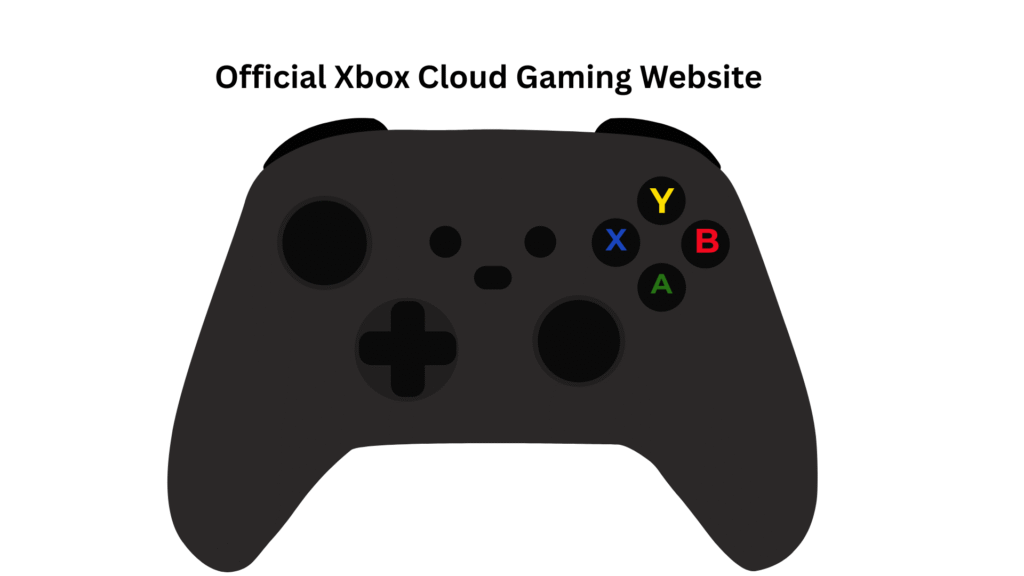
- Game Runs on Remote Servers
- Instead of rendering the game on your device, it runs on a server with Xbox Series X-equivalent hardware.
- Video Stream Sent to You
- The server compresses and streams the video feed to your device in real-time.
- Inputs Sent Back to Server
- When you press buttons on your controller or touchscreen, the input is sent instantly back to the server.
- Low Latency Synchronization
- The system works hard to keep latency low so the game feels smooth and responsive.
It’s essentially the same principle as cloud computing, but optimized for interactive gaming.
Devices That Support Xbox Cloud Gaming
One of the biggest strengths of Xbox Cloud Gaming is its wide accessibility. You’re no longer tied to a console or gaming PC.
Supported Devices:
- Mobile Devices: Android and iOS smartphones via app or browser.
- PCs & Laptops: Through the Xbox app or browsers like Edge and Chrome.
- Smart TVs: Samsung Smart TVs (and others with Xbox app support).
- Consoles: Xbox Series X/S and Xbox One can stream games, letting older consoles play next-gen titles.
- Web Browsers: Works with Edge, Chrome, and Safari.
Controller Options:
- Xbox controllers (wired or Bluetooth).
- PlayStation DualShock 4 controller.
- Touch controls (on-screen buttons for supported games).
- Recently added support for some third-party controllers.
Benefits of Xbox Cloud Gaming
Cloud gaming isn’t just convenient it’s transformative. Let’s look at the biggest benefits:
1. No Need for Expensive Hardware
You don’t need to buy a $500 console or a $2,000 gaming PC. A modest device with a good internet connection is enough.
2. Instant Play
Forget waiting for huge downloads or patches. With cloud gaming, you can start a game almost instantly.
3. Portability
You can switch devices seamlessly. Start a game on your Xbox at home, continue on your phone while commuting, and finish on your laptop.
4. Access to Hundreds of Games
With Game Pass Ultimate, you have access to a rotating library of 500+ high-quality titles from all genres.
5. Next-Gen Gaming on Old Devices
Even if you have an old Xbox One, you can stream Xbox Series X-quality games to it.
6. Save Storage Space
Games no longer eat up storage space, since they aren’t installed locally.
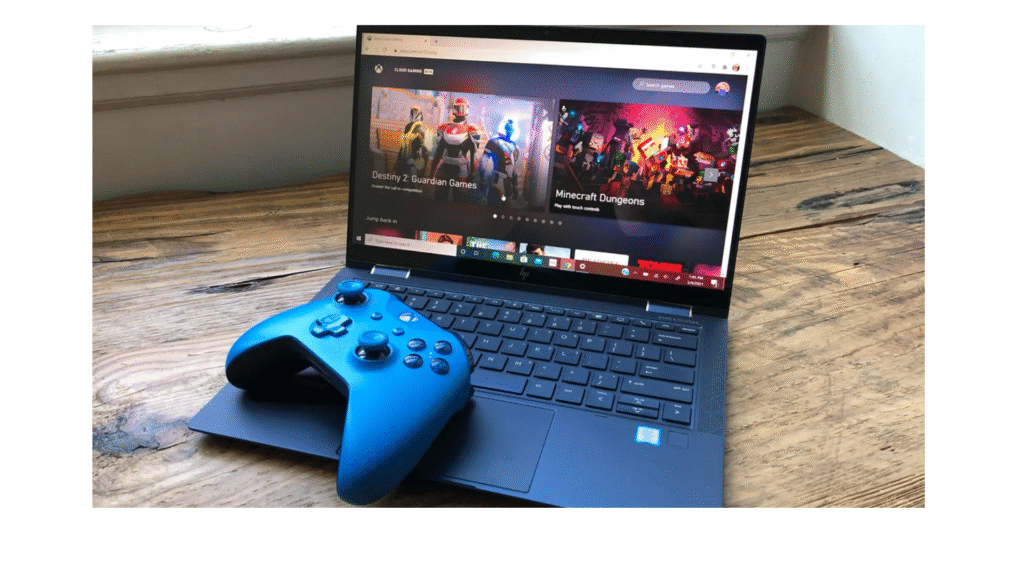
Challenges and Limitations
Despite its potential, Xbox Cloud Gaming faces a few hurdles:
1. Internet Speed & Stability
Cloud gaming requires fast and stable internet. Microsoft recommends at least 10 Mbps (mobile) and 20 Mbps (console/PC) with low latency.
2. Input Lag
Because inputs must travel to the server and back, there’s always some delay (latency). For most games, it’s fine but competitive shooters may feel less responsive.
3. Data Usage
Streaming games consumes a lot of data. One hour can use 2–4 GB, which is a problem for people with limited data plans.
4. Game Library Gaps
Not every game on Game Pass is available for cloud play. Publishers may restrict certain titles.
5. Controller Dependency
While touch controls exist, they aren’t ideal for all games. A physical controller often provides the best experience.
Xbox Cloud Gaming vs. Competitors
Microsoft isn’t the only player in cloud gaming. Here’s how it stacks up against rivals:
1. Google Stadia (Discontinued in 2023)
- Stadia was once a strong competitor but failed due to a weak library and lack of adoption.
- Xbox Cloud Gaming survived because it’s bundled with Game Pass, making it more appealing.
2. NVIDIA GeForce NOW
- Focuses on streaming games you already own (Steam, Epic).
- Offers higher graphics fidelity in some cases, but doesn’t include a bundled library like Game Pass.
3. PlayStation Plus Premium (Cloud Streaming)
- Sony’s service allows streaming of older PS3 and PS4 games.
- Limited in scope compared to Xbox’s next-gen cloud support.
4. Amazon Luna
- Subscription-based with “channels” for different publishers.
- Still small compared to Microsoft’s ecosystem.
Conclusion: Xbox Cloud Gaming currently offers the best balance of library, price, and accessibility.
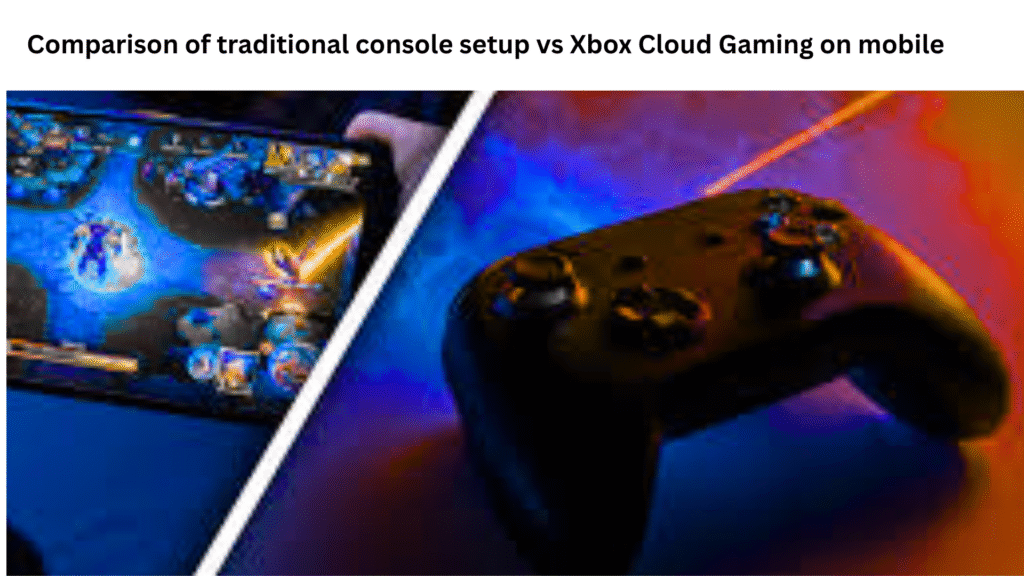
Who Should Try Xbox Cloud Gaming?
This service isn’t for everyone but it’s perfect for:
- Casual gamers who don’t want to spend thousands on hardware.
- Travelers who want to play console-quality games on the go.
- Students who only have a laptop or tablet.
- Gamers with old consoles who want to experience new-gen games.
- Anyone curious about next-gen gaming without upfront costs.
Tips for the Best Xbox Cloud Gaming Experience
To get the most out of cloud gaming, follow these tips:
- Use a Strong Internet Connection
- At least 20 Mbps for smooth streaming.
- Prefer Wi-Fi 5 GHz or wired Ethernet over mobile data.
- Use a Compatible Controller
- Xbox controllers provide the best experience.
- Play on the Right Devices
- A tablet or laptop gives a larger screen and better controls than a phone.
- Check Game Pass Cloud Icon
- Not all games support cloud play, so look for the little cloud symbol.
- Optimize Settings
- Close other apps using internet bandwidth.
- Keep your device charged to prevent lag from power-saving modes.
The Future of Xbox Cloud Gaming
Microsoft has made it clear: cloud gaming is here to stay. In fact, they envision a future where consoles may no longer be required. Some developments we can expect:
- More Supported Devices: Expansion to more smart TVs, handhelds, and even VR headsets.
- Better Graphics & Latency: As internet speeds improve (5G, fiber), cloud gaming will feel even more seamless.
- Exclusive Cloud Features: Games designed with cloud streaming in mind, offering features impossible on local hardware.
- Global Expansion: Wider availability across more countries.
- Deeper Integration with Xbox Ecosystem: Seamless handoff between console, PC, and mobile.
Some even speculate that the Xbox Series X might be the last traditional console, with cloud gaming leading the way into the next era.
Final Thoughts
Xbox Cloud Gaming is more than just a convenience it’s a revolution. It breaks down the traditional barriers of gaming, allowing anyone, anywhere, with a decent internet connection, to access top-tier games. While it’s not perfect yet limitations like latency and internet dependency remain it’s improving rapidly.
For gamers, this is an exciting time. For the first time, you don’t need to choose between expensive hardware and access to great games. With Xbox Cloud Gaming, the power of Xbox lives in the cloud, ready to be streamed at your fingertips.
If you’re curious about the future of gaming, there’s no better place to start than with Xbox Cloud Gaming.
FAQs About Xbox Cloud Gaming
1. Is Xbox Cloud Gaming free?
No. It’s included with an Xbox Game Pass Ultimate subscription, which costs around $16.99 per month.
2. Do I need an Xbox console?
No. You can play on mobile, PC, or smart TVs without owning a console.
3. What internet speed do I need?
Microsoft recommends at least 10 Mbps (mobile) and 20 Mbps (PC/console).
4. Can I use it offline?
No. Since games are streamed, you need an active internet connection.
5. Which devices support Xbox Cloud Gaming?
Android, iOS (browser), Windows PCs, some smart TVs, and Xbox consoles.
6. Can I play multiplayer games?
Yes. Xbox Live integration allows full online multiplayer support.
7. How many games are available?
Over 500+ games are available in the cloud library through Game Pass Ultimate.
8. Does it work with 5G mobile networks?
Yes, and 5G often provides excellent speeds for smooth gameplay.
-

 Fashion3 months ago
Fashion3 months agoThese ’90s Fashion Trends Are Making a Big Comeback in 2025
-

 Fashion3 months ago
Fashion3 months agoTop Fashion Trends to Follow in August 2025
-

 How-To Tutorials & Troubleshooting3 months ago
How-To Tutorials & Troubleshooting3 months agoHow to Fix Missing Pantone Color Books in Adobe Illustrator 2024-2025 (Free and Easy Method)
-

 Entertainment3 months ago
Entertainment3 months agoTrending Soundtrack: “KPop Demon Hunters”
-

 Entertainment3 months ago
Entertainment3 months agoSquid Game Season 2: Deadlier Games, Deeper Secrets & Darker Drama




